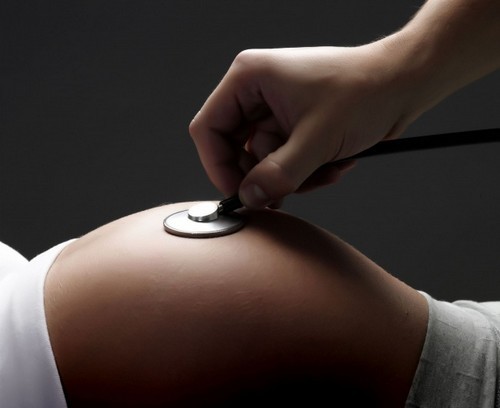Why is a glucose tolerance test necessary?
Pregnancy is a period when many dangers await a woman. One of the dangers that expectant mothers often underestimate is gestational diabetes mellitus (GDM).
Fortunately, there is a simple and reliable way to detect it – this is a glucose tolerance test (glucose tolerance test or GTT).
Gestational diabetes is a disease that affects only pregnant women. In this condition, an increased blood sugar level in a woman is observed. Gestational diabetes affects 14% of pregnant women.
Pregnant woman
What caused this circumstance? To absorb sugar, the hormone insulin, which is produced by the pancreas, is needed. During pregnancy, a woman’s pancreas must produce insulin not only for herself, but also for the baby. Therefore, the production of insulin during pregnancy normally increases. However, in some cases this increase may not be enough, and then excess sugar is formed in the blood.

Excess glucose during pregnancy is fraught with:
- an increase in the body weight of the newborn and the associated difficult birth and birth trauma;
- violations during pregnancy, miscarriages;
- deviations in fetal development;
- diabetic fetopathy in a newborn.
Even if a child with gestational diabetes is born without problems and is healthy, there is still a high risk that he will subsequently develop type 2 diabetes.
That is why doctors take pregnancy diabetes seriously. This disease is transient in nature, and in most cases passes without a trace after the birth of the baby.
A glucose tolerance exercise test is performed to rule out the disease. After all, the symptoms of diabetes during pregnancy are not very specific, and it is impossible to unambiguously determine the disease from them. Sometimes a woman suffering from GDM may feel unexplained weakness or dizziness, changes in appetite, extreme thirst. But in 99% of cases, all these signs are attributed to the negative impact of pregnancy itself.
Testing is usually scheduled for weeks 14-16. Previously, it makes no sense to conduct a test, since in the first trimester, deviations in the level of sugar caused by pregnancy are usually not observed. The only exception is the detection of high blood sugar in the patient’s blood during biochemical analysis. In this case, the test can be carried out from 12 weeks.
Another control GTT may also be prescribed, but already at the beginning of the third trimester (24-28 weeks). However, after 32 weeks, the test is contraindicated, as it can harm an unborn baby.
In some cases, doctors give a referral for testing to all pregnant women, wanting to be safe.
However, most often, the direction is given to women at risk:
- overweight (body mass index over 30);
- having close relatives suffering from diabetes;
- a history of gestational diabetes;
- giving birth to children with increased body weight (more than 4 kg);
- those who have been found to have sugar when analyzing urine;
- having a high level of glucose (more than 5.1) in a blood test for sugar;
- having a history of polycystic ovaries;
- those over 35 years old;
- those who have a first pregnancy and are over 30 years old.
Some doctors give a glucose tolerance test in the second trimester of pregnancy only to women at risk, and at the beginning of the third trimester to everyone else.
Test Methodology
The test is scheduled for early morning (from 8 to 11 hours). Before the test, you need to undergo training – eat nothing for 8-14 hours (as the doctor says). You can not take medications if carbohydrates are present in their composition. Diuretic drugs, glucocorticosteroids, vitamins, iron preparations are also prohibited. It is not allowed to drink alcohol, smoke, drink coffee. It is allowed to drink only non-carbonated water. However, water can be drunk only in small volumes and not immediately before the test.
You can drink only water before the test.
It is important to observe another condition – the diet in the last 3 days before GTT should be normal, without a strong restriction of carbohydrates.
You can’t worry too much, exercise.
GTT takes a fairly large amount of time – 2.5-3.5 hours. When a woman comes to the laboratory, she is offered to sit down and relax. After 20-30 minutes, a blood sample is taken from her. All blood samples are taken from a vein. This blood sample is a control. Then, the glucose value in the blood is measured. If glucose is within normal limits, further tests are performed, otherwise, if the sugar is too high, gestational diabetes or even manifest true diabetes is diagnosed.
Then the woman is given a glass of drink (250 ml) of warm (+ 37-40 ° C) water, in which 75 g of glucose is dissolved. The solution must be drunk within 5 minutes. The solution is very sweet, so if a woman has constant nausea, for example, due to toxicosis of pregnancy, then testing is contraindicated.
75 g glucose for GDM test
The next length of time, after the glass has been drunk, the woman needs to be at rest. It’s best to just sit or lie down (as your doctor will say).
An hour after drinking glucose, a woman takes another blood sample, and after 2 hours – another one. These fences are also being investigated, and according to the results of the studies, doctors make their verdict. If the results are good, a third sampling can be carried out, after 3 hours. Until the last blood sampling, the pregnant woman is not allowed to eat or drink. Do not exercise or even walk.
Blood sampling from a vein during a test
In order to suspect the presence of a GDM in a woman, it is necessary that in at least two blood samples the value would go beyond the normal range.
However, the conclusions may not be final. If the results are of boundary value, and it cannot be unambiguously concluded that the pregnant woman has GDS, or there is doubt that the patient strictly followed all the rules for preparing for the test, the doctor can prescribe a retest. Usually it is carried out 2 weeks after the first delivery.
Also, before making a diagnosis, it is necessary to exclude increased activity of the adrenal glands or thyroid gland, as well as taking corticosteroid drugs.
What factors can cause distortion of test results:
- lack of magnesium and potassium,
- systemic and endocrine diseases,
- stress
- physical activity before and during the test,
- taking certain medications (corticosteroids, beta-blockers).
An oral glucose tolerance test cannot harm a pregnant woman or her child, unless it is contraindicated.
Contraindications for glucose tolerance test:
- severe pregnancy toxicosis,
- liver pathology
- acute pancreatitis or cholecystitis,
- stomach ulcer
- Crohn’s disease,
- dumping syndrome (too fast passage of food from the stomach to the intestines),
- acute inflammatory diseases
- ARI or ARVI (you should wait for recovery),
- fasting glucose above 7 mmol / l,
- abdominal pain of unclear etiology,
- pregnancy duration over 32 weeks.
You can not conduct a glucose tolerance test even if the woman is prescribed bed rest.
In some cases, parenteral testing may be performed instead of an oral test. In this test, glucose is injected into a vein.
Decoding test results.
| blood sampling number | when blood is taken | norm, mmol / l |
| 1 | before stress test | less than 5.2 |
| 2 | one hour after a stress test | less than 10.0 |
| 3 | 2 hours after a stress test | less than 8.5 |
| 4 (optional) | 3 hours after a stress test | less than 7.8 |
Measurement results exceeding the values given in the table indicate a possible HDM. If the first measurement showed more than 7 mmol / L or the third measurement – more than 11 mmol / L, manifest diabetes is diagnosed.
Glucose tolerance test, example result
What to do if GTT has detected gestational diabetes
Treatment of diabetes is carried out by an endocrinologist. In most cases, the blood sugar level during pregnancy can be kept within normal limits through exercise and diet. Diet includes the restriction of fast carbohydrates (sugar, sweets, chocolate, sweet fruits and drinks), potatoes, pasta. This method of treatment is practiced if the pregnant woman’s sugar values are not much higher than normal.
But if these measures do not help, and the sugar level continues to rise, or initially the pregnant woman has a high glucose level, then the doctor can prescribe insulin injections to the patient. In addition, the weight control of the unborn child is carried out. If gestational diabetes has led to an increase in fetal weight, then it is entirely possible that a caesarean section will be performed instead of a normal birth.
1-2 months after birth, another blood test is performed. It is necessary in order to make sure that the sugar level has returned to normal, and further treatment for diabetes is not required. Otherwise, additional studies are carried out, and a woman is prescribed treatment for type 1 or type 2 diabetes.



